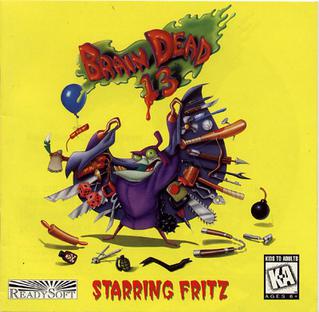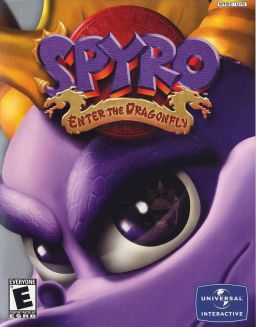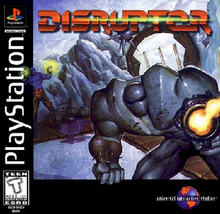
The 3DO Company, also known as 3DO, was an American video game company. It was founded in 1991 by Electronic Arts founder Trip Hawkins, in a partnership with seven other companies. After 3DO's flagship video game console, the 3DO Interactive Multiplayer, failed in the marketplace, the company exited the hardware business and became a third-party video game developer. It went bankrupt in 2003 due to poor sales of its games. Its headquarters were in Redwood City, California, in the San Francisco Bay Area.

The 3DO Interactive Multiplayer, also referred to as simply 3DO, is a home video game console developed by The 3DO Company. Conceived by entrepreneur and Electronic Arts founder Trip Hawkins, the 3DO was not a console manufactured by the company itself, but a set of specifications, originally designed by Dave Needle and RJ Mical of New Technologies Group, that could be licensed by third parties. Panasonic produced the first models in 1993, and further renditions of the hardware were released afterwards by GoldStar, Sanyo, Creative Labs, and Samsung Electronics in 1997.
Insomniac Games, Inc. is an American video game developer based in Burbank, California and part of PlayStation Studios. It was founded in 1994 by Ted Price as Xtreme Software, and was renamed Insomniac Games a year later. The company is most known for developing several early PlayStation mascots, Spyro the Dragon, Ratchet and Clank, as well as the Resistance franchise, 2014's Sunset Overdrive and the Marvel's Spider-Man series with Marvel Games. In 2019, the studio was acquired by Sony Interactive Entertainment, becoming a part of SIE Worldwide Studios.
The Panasonic M2 is a video game console platform developed by 3DO and then sold to Matsushita, a company known outside Japan by the brand Panasonic. Initially announced as a peripheral chip for the 3DO Interactive Multiplayer, it was later unveiled as a standalone console. The console was cancelled in 1997, but the M2 technology was incorporated into other devices.

Mark Evan Cerny is an American video game designer, programmer, producer and media proprietor.

Brain Dead 13 is an interactive movie video game developed and originally published in North America by ReadySoft on 15 December 1995 and in Europe by Empire Interactive on the same year for MS-DOS. Unlike Dragon's Lair and Space Ace, which began as laserdisc arcade games, it was only released for personal computers and video game consoles. In the game, players assume the role of young computer expert Lance Galahad to defeat Dr. Nero Neurosis at his castle and its residents. Its gameplay is primarily presented through the use of full-motion video (FMV).

Spyro: Enter the Dragonfly is a 2002 platform video game released for the PlayStation 2 and GameCube, developed by Equinoxe Digital Entertainment and Check Six Studios; and published by Universal Interactive. It is the fourth main installment in the Spyro series. It is the first to be released on either console and the first to not be developed by the series creator, Insomniac Games.

Madden NFL 98 is a 1997 football video game. It was the last edition of the Madden series to be released for the Super NES, Genesis and Sega Saturn platforms, as well as the last Madden game to utilize 2D sprites for the players and referee, on 3D playing fields.

NHL Open Ice: 2 on 2 Challenge, or just NHL Open Ice, is an ice hockey arcade game released by Midway Games in 1995. It features comically exaggerated hockey play, causing it to often be described as an ice hockey equivalent to Midway's NBA Jam.

2Xtreme is a racing game released for the PlayStation in 1996 and a sequel to ESPN Extreme Games. Unlike the original, the game does not bear ESPN licensing. In it, the player races against others in various events around the world using Rollerblading, skateboarding, biking, and snowboarding. A sequel, 3Xtreme, was released in 1999.

Army Men is a real-time tactics video game developed and published by The 3DO Company for Microsoft Windows and Game Boy Color.

Total Eclipse is a space flight simulation video game developed and published by Crystal Dynamics for 3DO. It was later ported to the PlayStation under the title Total Eclipse Turbo. The game was copyrighted in 1993 and released 1994. Total Eclipse Turbo was a launch title for the PlayStation in the U.S., with the game's released date predating the North American console launch by 11 days. A sequel, Solar Eclipse, was released for Sega Saturn and PlayStation.

Shockwave Assault is a science fiction combat flight simulation video game developed by Advanced Technology Group and published by Electronic Arts for various home video game consoles and PCs. The player takes control of a futuristic fighter plane to defeat extraterrestrial ships and tripods.

Iron & Blood: Warriors of Ravenloft is a 3D fighting game released for PC and PlayStation.

BattleSport is a 1996 futuristic sports video game developed by Cyclone Studios. It was originally published by Studio 3DO exclusively for their 3DO Interactive Multiplayer in 1996, but after the 3DO was discontinued BattleSport was published for other systems by Acclaim Entertainment. It was released for Windows and PlayStation, Sega Saturn, and Windows in North America in July 1997, and in Europe on August 1, 1997.

Universal Interactive was an American video game publisher. The company was established on January 4, 1994, and led by Skip Paul and Robert Biniaz of MCA. It was best known for producing the Crash Bandicoot and Spyro platform game franchises.

Road Rash is a 1994 racing and vehicular combat video game originally published by Electronic Arts (EA) for the 3DO Interactive Multiplayer. A version for the Sega CD was developed simultaneously and released in 1995 to act as a "bridge" between the 3DO version and the Sega Genesis title Road Rash 3, and the game was subsequently ported to the PlayStation, Sega Saturn, and Microsoft Windows in 1996. The game is the third installment in the Road Rash series, and is centered around a series of motorcycle races throughout California that the player must win to advance to higher-difficulty races, while engaging in unarmed and armed combat to hinder the other racers.















